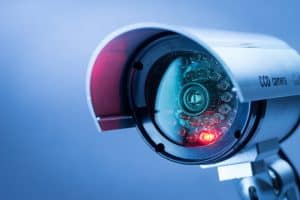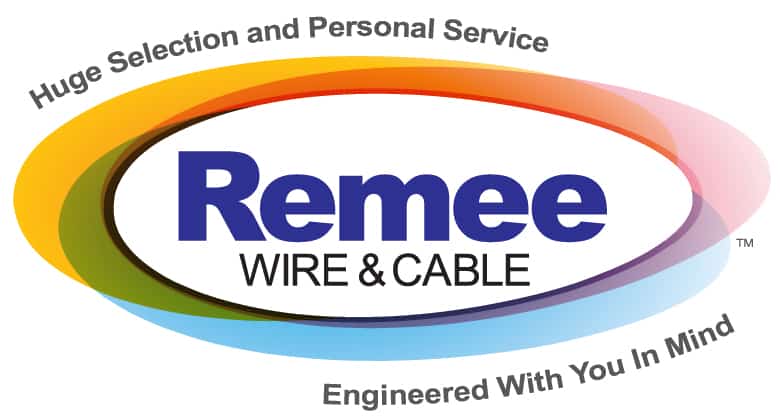Security is one area where no business can afford to skimp. The companies that fail to update their security measures in a timely fashion and stay on top of emerging security trends are most often the ones that struggle to compete in today’s ever-advancing technological landscape. With the latest in CCTV and surveillance cables, it’s easier and more cost-effective than ever to secure your place of business through new security systems.
Security cameras have become much cheaper, more accessible, and more widely distributed in both personal and commercial markets. Data gathered by Statista shows that use of smart home security systems in the U.S. increased 23% year-over-year as of 2019, and the U.S. security industry generated over $6 billion in revenue in 2019.
In other words, if you’re considering a security update, you’ll want to get started as soon as possible. But where to begin? To give you an idea of what features and systems might best fit your needs, we’ll examine some emerging trends in the security and surveillance industry that work with CCTV and Surveillance cables from Remee.
 Emerging Trends in Security CCTV and Surveillance Cables
Emerging Trends in Security CCTV and Surveillance Cables
In CCTV and surveillance cables, many of the latest advancements center around online connectivity, artificial intelligence, and new applications for the data your surveillance systems gather. Without the proper CCTV and Surveillance cables to support your new advanced security systems, you likely will not be able to get their full range of benefits.
Security Trend 1: Video Analytics
Today’s smart security systems are increasingly interconnected and can harvest large amounts of video data. This means that users of surveillance tech can expect to see an increase in the use of analytics tools to determine patterns based on that data.
Apps that weren’t available just a few years ago now give users granular control over how they analyze the video recorded from their systems. Suspect tracking technology, for example, can track the movements of a person suspected of criminal activity. If there’s a break-in at a business and that person is caught on camera, the footage could be used in conjunction with other cloud-connected security systems to track the suspect’s movements.
Spatial recognition, tamper detection, and biometric technology like facial recognition are also becoming increasingly common in the video surveillance world.
Security Trend 2: IoT Connectivity and Cloud Computing That Relies on CCTV and Surveillance Cables
Smart security systems can send and receive data over the internet more easily than ever before. Where before CCTV footage was constrained by the location where a recording took place, now that footage can be sent to any smart device. It can then be shared from a smartphone, tablet, or other internet-connected smart devices.
Many companies using smart security systems today may not even store their surveillance footage on-site, instead opting to store it all in cloud servers elsewhere. As data demands increase, edge computing could also grow more common to meet the processing needs of large cloud servers.
Since edge computing allows near-simultaneous capture and processing of video footage, it lessens the data-processing load on a smart system’s cloud servers. It can also reduce the bandwidth demand for the transfer and storage of that data and allow for encryption and anonymization before the data gets sent. To make all of this even possible it relies on high quality CCTV and Surveillance cables.
Security Trend 3: Deep Learning and Machine Learning
Deep learning and machine learning are increasingly being applied to surveillance and security systems. Application of these technologies to the vast amount of video data harvested from public security systems and other surveillance feeds has the potential to revolutionize the world of commercial CCTV and surveillance.
For example, an algorithm applied to traffic patterns seen through street cameras could help avoid accidents. Gesture, posture, and behavioral analysis could even potentially prevent crimes before they’re committed.
Machine learning could help humans analyze the video data being gathered from larger smart security systems—something individuals would have a hard time accomplishing on their own. The technology could help a human operator identify trends, which the operator could then decide whether to act on.
Security Trend 4: The GDPR, Cybersecurity, and Privacy Concerns
With the interconnectedness of smart security systems facilitating ease of data sharing, privacy concerns are mounting. People want to know if they’re being monitored, how, and why.
For security companies, this means responsibly handling people’s data, knowing what constitutes personal information, and abiding by new digital privacy laws like Europe’s General Data Protection Regulation (GDPR). These new laws put a higher level of accountability on businesses to justify why they store personal data (including video surveillance footage) and notify the public as to how that data is being collected.
Because of the global nature of online business, more video surveillance companies will be coming into compliance with the GDPR, if they aren’t already. The law affects not only companies in the EU, but the ones that do business with companies or customers in the EU. That includes businesses in the United States and other non-EU countries.
Enhanced Protection from Cyber Attacks
Part of that compliance will be taking steps to protect personal information via encryption and anonymization. It is also in the best interest of companies in the security and surveillance sectors to protect themselves from cyberattacks that could lead to the theft of that data. That means keeping antivirus and anti-malware systems up to date, keeping offline backups, and using harder-to-crack passwords and passcodes, among other measures.
The more the IoT expands, the more opportunities bad actors will have to work their way into a system and get access to sensitive data. Going forward, cybersecurity will continue to be at the forefront of the security and surveillance industry, so it’s crucial that businesses take measures to secure data when installing new CCTV and surveillance systems.
Hooking Up Your CCTV and Surveillance Cables
If you’re looking into upgrading your current security system or installing a new one, you’ll need to make sure it’s done correctly. That means the right technicians, the right equipment, and the right CCTV and Surveillance cables.
While wireless camera systems are on the rise, you’ll still need sturdy cables to hook up an IoT connected system and many smart devices. Remee has been in the business of manufacturing cables since 1972, including CCTV and Surveillance Cables. Remee stocks what you need to get your security system connected with Vigilance™ Security, Alarm and Control cables, including plenum and riser rated copper cables, composite video coax, lighting and control cables for various security and automation applications, including surveillance and CCTV systems and more.
Visit our site and contact one of our experts for a consultation today.
